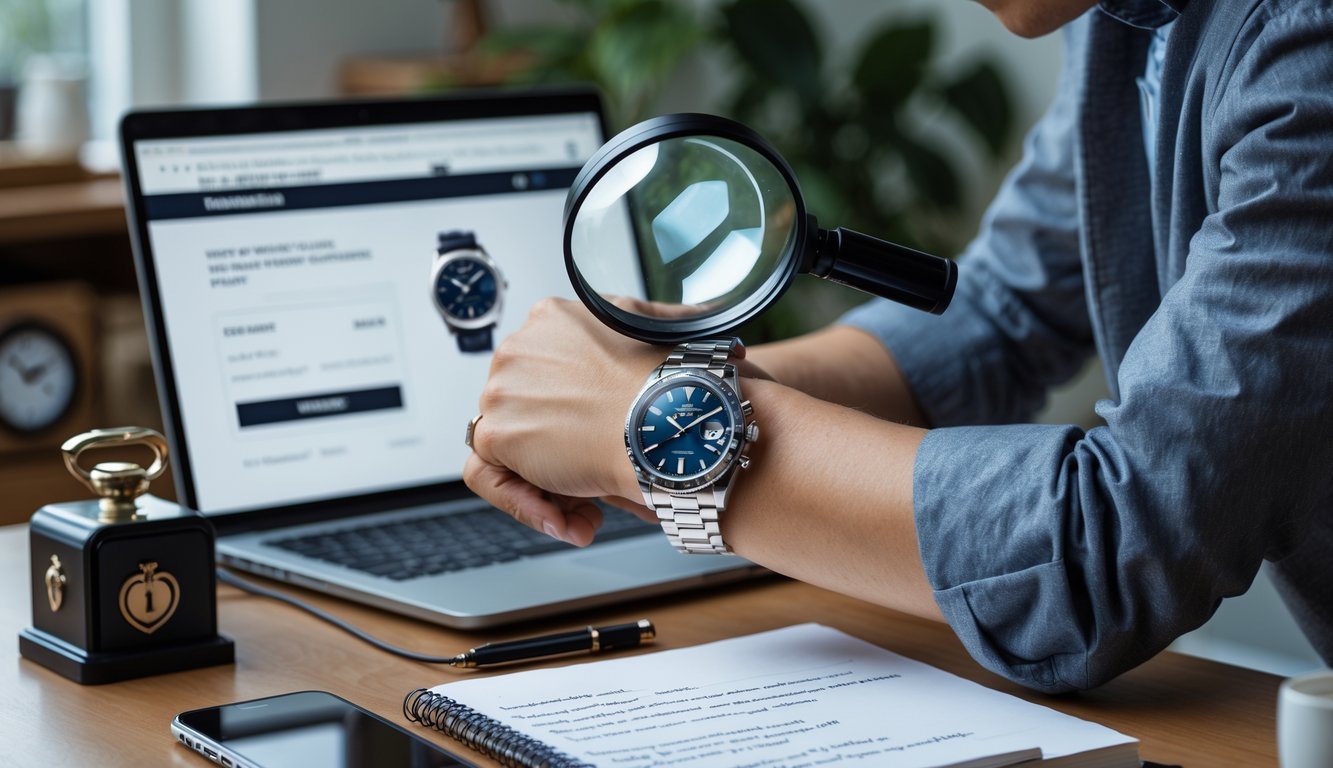Selling watches online can be profitable, but scammers often target sellers with fake payment tricks and phishing attempts.
They’re after your money or personal info, so you need to stay sharp.
To avoid watch selling scams, make sure you check who the buyer is, stick to secure payment methods, and watch out for red flags like overpayment offers or buyers who want your personal details right away.
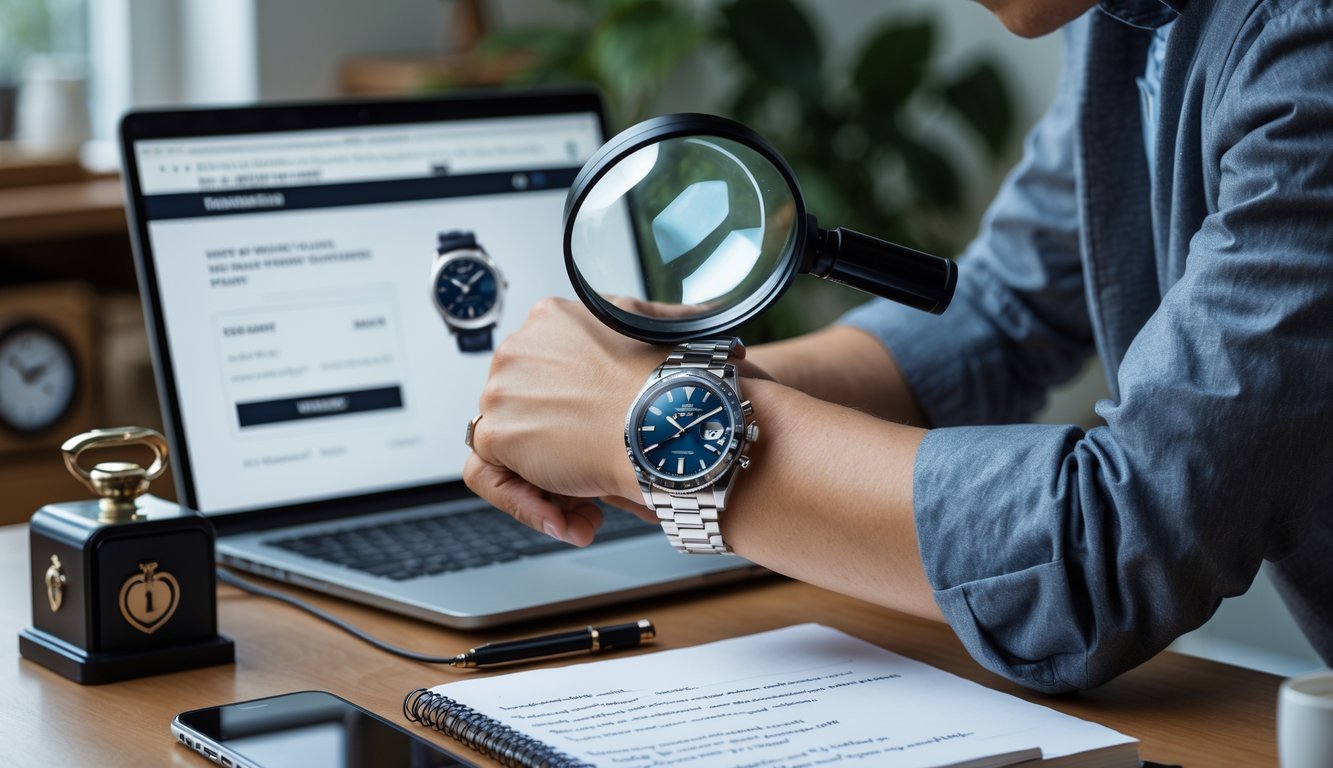
Recent cases really show how sneaky online fraud has gotten.
A Sydney crime syndicate made nearly $10 million selling fake designer goods on social media.
Fake accounts keep popping up, pushing bogus deals and tricking both buyers and sellers.
You can protect yourself by learning the usual scam tactics and sticking with reputable selling platforms.
This guide will help you spot warning signs and keep your sales safe.
Key Takeaways
- Always check buyer identities.
Avoid buyers who won’t do video calls or ask for weird payment methods.
- Stick to secure payment platforms and trusted marketplaces that offer some protection.
- Watch out for overpayment offers, urgent requests, or buyers who avoid meeting in person.
Identifying and Avoiding Common Watch Selling Scams
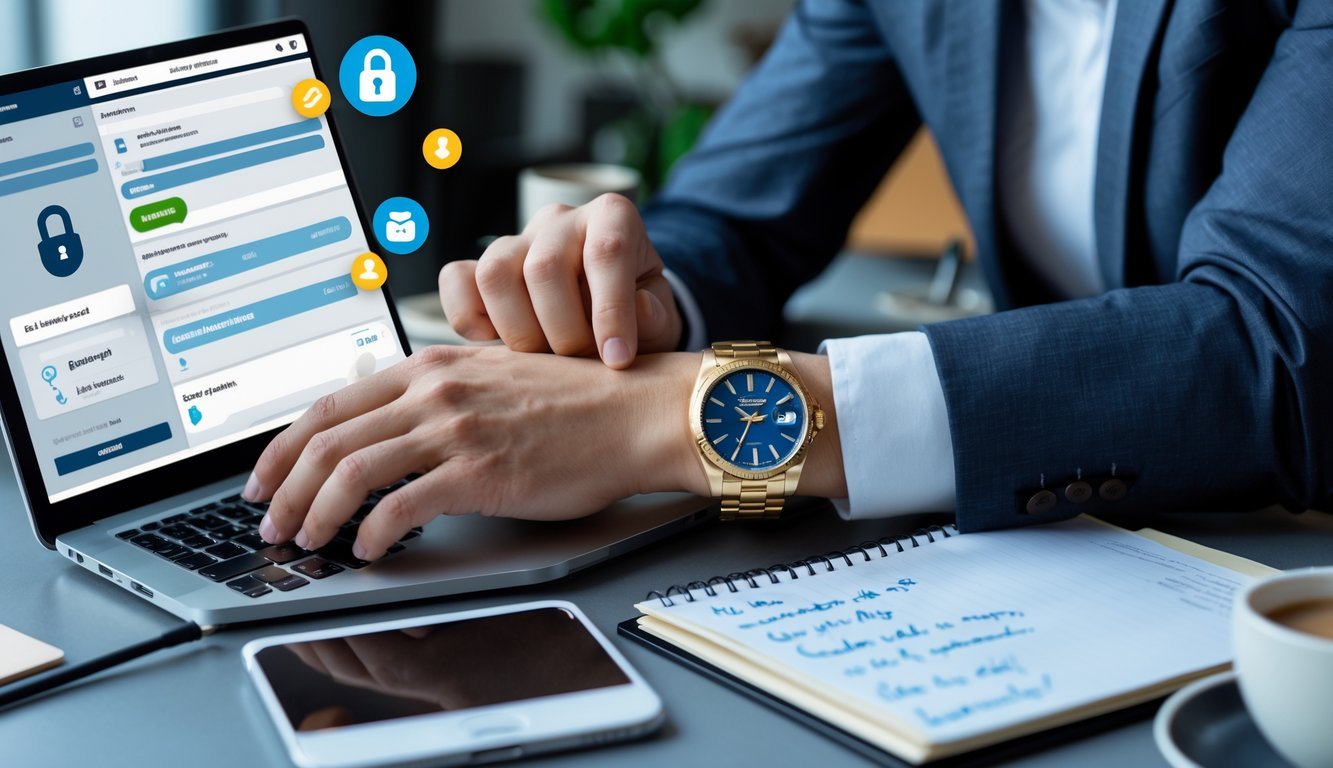
Scammers go after sellers by pretending to be buyers with stolen payment methods, fake verification schemes, and impersonation tricks.
They usually try to rush you or get you to skip secure payment options.
Recognizing Counterfeit Watch Schemes
Scammers sometimes say they need to “verify” your watch before buying.
They’ll ask you to send it to a certain address for authentication.
That’s always a scam.
Real buyers use legit authentication services or meet you in person.
Watch out for these verification scam moves:
- Asking you to ship a watch for “inspection” before purchase
- Fake authentication company websites
- Offering extra money for “faster verification”
- Claiming you need certificates from a certain company
Legit buyers usually want to meet at authorized dealers or use escrow services.
They won’t ask you to ship an expensive watch before the payment clears.
Some scammers even build fake authentication websites that look convincing.
Always check authentication services through official sources before you agree to anything.
Spotting Fake Buyer Tactics
Fake buyers have a bunch of tricks to get you to ship a watch without real payment.
Red flags:
- Overpaying and then asking for a refund
- Demanding certain shipping methods
- Pushing you to finish the deal super fast
- Using payment methods that can be reversed
PayPal’s goods and services option gives protection, but scammers often want you to use friends and family payments instead.
Bank transfers and checks can bounce back even after they look like they cleared.
Real buyers ask about the watch’s condition and history.
Scammers usually don’t care about those details.
If a buyer jumps on your asking price right away, be cautious.
Real collectors will ask about service history, boxes, papers, and condition.
Dealing With Impersonation and Fraudulent Listings
Scammers steal photos and descriptions from real sellers to make fake listings on different platforms.
They use these listings to collect payments but don’t have a watch to ship.
The stolen photos make everything look real.
How to protect yourself:
- Watermark your photos with your username
- Use reverse image searches to spot copied listings
- Report fake listings right away
- Keep records of your original photos
Some scammers pretend to be well-known dealers or collectors.
They’ll copy usernames and profiles to look legit.
Always double-check buyer identities in a few different ways.
Look at their transaction history and ask for more proof if you feel uneasy.
If you think someone’s impersonating a dealer or collector, reach out to the real person.
Most genuine folks will help you call out the scammer.
Securing Safe Watch Transactions Online
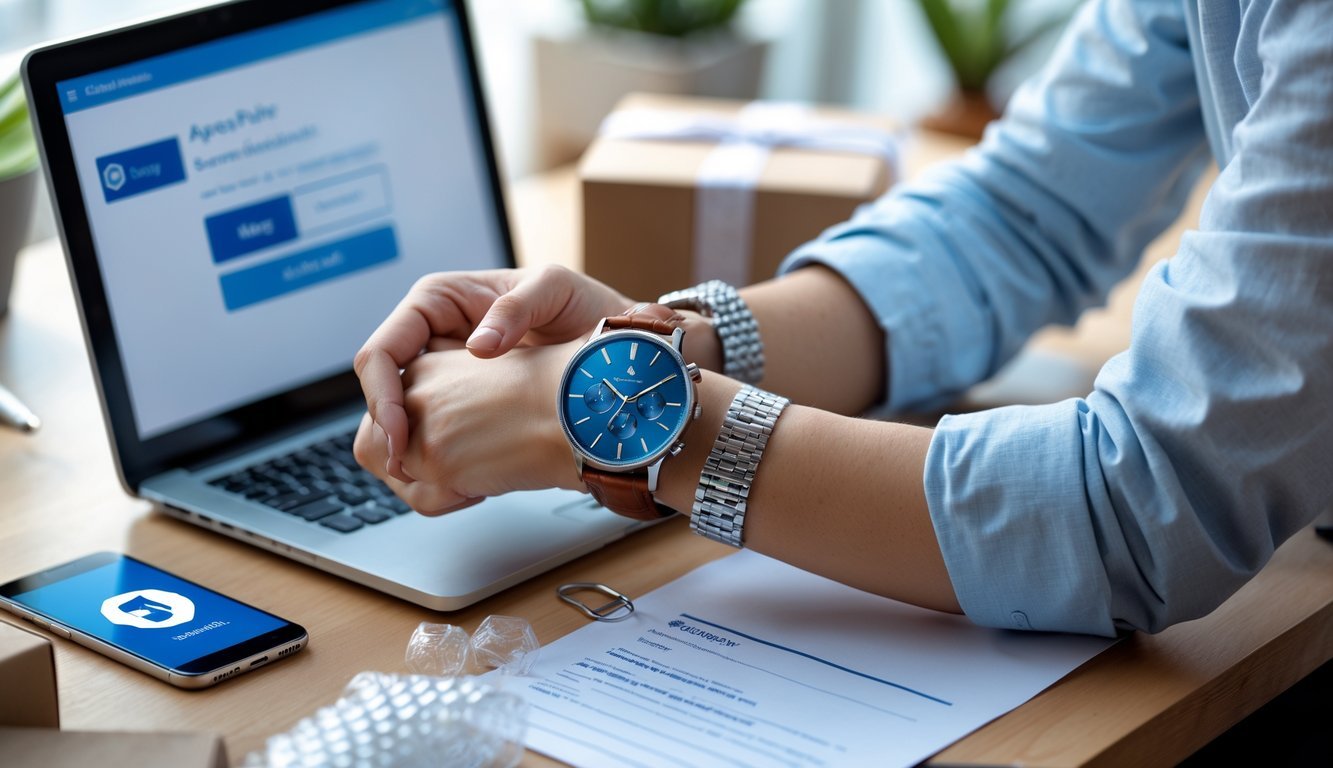
If you want to sell watches online safely, you’ll need to use trusted platforms, check who you’re dealing with, and use secure payment and shipping.
Choosing Reputable Selling Platforms
Trusted marketplaces usually have built-in protection and ways to settle disputes. eBay has seller protection programs and handles payments through PayPal or managed payments.
Chrono24 focuses on luxury watches and attracts serious collectors.
They offer escrow and authentication for high-value sales.
Steer clear of unknown or brand new selling sites. They don’t have a track record, so if something goes wrong, you might be out of luck.
Facebook Marketplace and Craigslist work best if you can meet buyers in person.
Meeting up cuts out shipping risks and payment delays.
Don’t forget about platform fees when setting your price. eBay takes about 10-15%.
Chrono24 charges a 6.5% commission plus listing fees.
Verifying Buyer Identities
Check the buyer’s feedback and account history before you accept an offer.
Look for at least 10 positive transactions and no recent bad reviews.
Ask questions about the watch model, movement, or features.
Real collectors will know their stuff and want to talk details.
Red flags:
- Brand new accounts with no feedback
- Buyers who want to move the conversation off the platform
- Offers way above your asking price
- Buyers pushing you to ship right away
Only ship to addresses verified by the selling platform.
If a buyer wants to change the address at the last minute, don’t do it.
Safe Payment Methods and Shipping Practices
PayPal Goods and Services gives you the best seller protection.
Never accept friends and family payments—those don’t protect you at all.
Wire transfers and money orders are risky.
Bank checks can bounce weeks after you deposit them.
For shipping:
- Always use insured shipping with tracking
- Require an adult signature on delivery
- Take photos of your packaging
- Ship only to verified addresses
If your watch is worth more than $1,000, use registered mail or FedEx with declared value.
These options give you more security and full insurance.
Save all your messages, photos, and shipping receipts.
If there’s a dispute later, you’ll have proof you did everything right.
Frequently Asked Questions
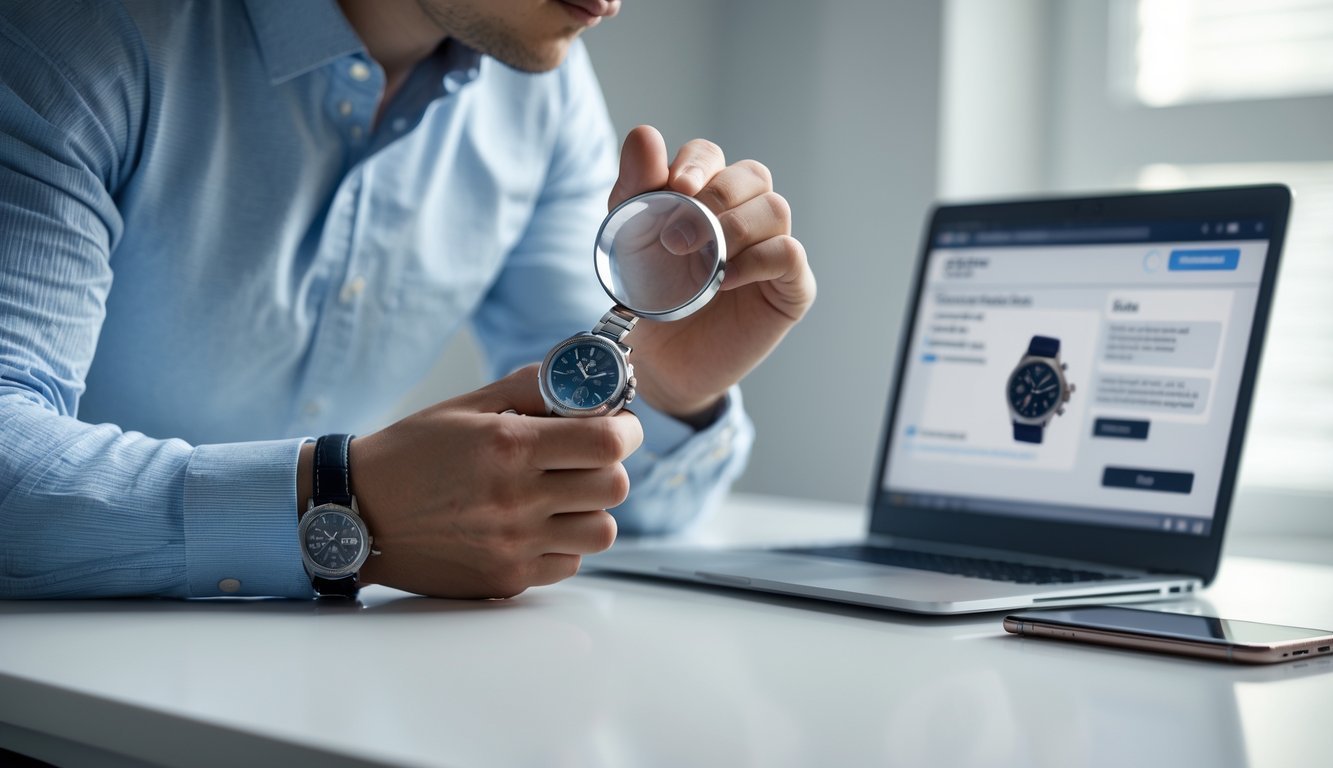
Selling watches online comes with risks, from payment scams to shipping theft.
Knowing how to check buyers and which payment options are safe can protect your watch and your wallet.
What are the red flags to watch for in online watch sales transactions?
If a buyer won’t talk by phone or video, that’s a big warning sign.
They might also push you to ship the watch fast without proper payment verification.
Offers that are way above your asking price usually mean trouble.
Real buyers rarely overpay without some haggling.
Requests for payment by wire transfer, crypto, or gift cards aren’t safe.
You can’t reverse those payments, and there’s no protection.
If a buyer wants you to ship to a different address than the payment account, be careful.
That’s often a sign of stolen payment info.
How can I verify a buyer’s legitimacy before completing a watch sale?
Ask for a phone call before you finish the sale.
Real buyers are happy to talk about the watch or the deal.
Request references from previous watch sales or purchases.
Collectors often have some kind of transaction history they can show.
Check out their social media or online presence.
Real buyers usually have a digital footprint that matches up.
Make sure the payment account name matches the person you’re talking to.
Which payment methods are safest when selling watches over the internet?
PayPal Goods and Services protects both buyers and sellers.
They’ll help settle disputes and cover fraud.
Bank wire transfers are safe once you know who you’re dealing with.
Wait until the money is fully cleared before shipping.
Escrow services keep the money safe until you deliver the watch.
These third parties protect both sides, especially for expensive sales.
Avoid personal checks, money orders, and cashier’s checks.
Scammers can forge or cancel those after you’ve shipped the watch.
What are the best practices for documenting the condition of a watch before selling it online?
Take clear photos of the watch face, case, bracelet, and clasp.
Get close-ups of any scratches or signs of wear.
Write down the serial and reference numbers.
These help prove the watch is real and can help with insurance.
Film a quick video of the watch running.
Show how the time-setting and any special features work.
Include photos of the original box, papers, and certificates.
These add value and help prove authenticity.
Where can I find a reliable third-party escrow service for high-value watch sales?
Escrow.com is a solid choice for secure luxury transactions.
They hold the money until both sides are happy.
Chrono24’s escrow service is built for watch sales and understands what collectors need.
Some local banks offer escrow for big-ticket items.
It’s worth asking your bank if they have this service.
Law firms sometimes handle escrow for expensive watches.
An attorney can hold the funds and oversee the deal.
How should I handle shipping to ensure the watch is protected and the sale is secure?
I always use registered mail with full insurance that matches the watch’s value.
This kind of service needs a recipient’s signature and lets you track the package every step of the way.
Only ship to addresses that are verified and match the buyer’s payment info.
I’d steer clear of forwarding services or PO boxes.
I pack the watch in its original box, then add extra protective materials.
For pricier watches, I double-box them, throw in bubble wrap, and use plenty of padding.
Ask for an adult signature when the delivery arrives.
That way, the package won’t get left outside or handed to the wrong person.


